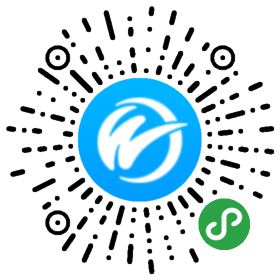-

-

公众号
-

小程序
- TOP
为了方便大家准备教师招聘面试考试,实现自己的教师梦,文都网校小编给大家整理了说课试讲稿,希望对你有所帮助!
一、教材分析
1、教材内容分析
在一定意义上,主题公园作为人类文明的一大体现,作为当今社会人们主要休闲、娱乐方式之一,是一个非常贴近生活、具有时代性、可深度挖掘的教学主题。本单元围绕a world of fun 这一主题开展听、说、读、写多种教学活动。单元语言素材涉及过山车、蹦极运动、自由落体车、赛车等娱乐方式及各类主题公园内容,具有典型的时代气息,有利于学生了解生活、运动与休闲,了解中外文化,增强世界意识,有利于培养积极的生活态度。
2、教学重点、难点
1) 重点:
话题: Talking about amusement parks.
功能: Ways of giving directions.
Designing new things.
词汇: theme create attract attractions lead to have sth. in common
thrills and entertainment be based on more advanced step into experience sth. risk injury give sb. a thrill scream one’s way… race against imagination design live to ride
表达用语: Excuse me. Am I going in the right direction?
Excuse me. Does this road lead to …?
Got it. Thank you.
句型: There is the Fun Fun Park, where we will have rides and entertainment.
What reason does he give for choosing his park?
Entering one of the attractions at Universal Studios is like steeping into the world of your favourite film.
It seemed like people just cannot get enough of scary rides and exciting adventures.
You can feel what it is like to live in space…
语法: The –ing form used as an adverbial.
eg. Many people come to the theme parks looking for thrills and entertainment.
Visitors leave knowing more about the idea behind the park.
Having enjoyed the rides at the Headland, visitors can take the shuttle to the Lowland.
2) 难点:
a.针对Reading的语篇分析。
b.动词-ing结构作状语的运用。
c.针对事物特点描述的写作。
二、语篇分析
单元Reading 的Theme Parks是一篇介绍主题公园的说明文。它一共由4段组成,包括主题公园的定义、特点,针对the World Park of China, the Ocean Park of Hong Kong, Disneyland in California 等主题公园的描述和对未来新兴主题公园的展望;让学生体会、概括主题公园为何如此受人们喜爱的事实理由。
1、编者意图
引导学生了解主题公园及其他相关户外活动,理解其主题内涵;激发学生热爱生活,积极进取,合作创新。
2、文章结构思路如下:
1)What is a theme park? →
2)Know about 3 great theme parks:
The World park ---People can have fun and experience sth different.
The Ocean Park in Hong Kong ---People come for thrills and entertainment and know more about the idea behind the park.
Disneyland in California ---The theme is the world of Walt Disney and his characters. →
3)New theme parks are being built.
3、篇章结构图示:
What is a theme park?
Examples:
Three parks What do people
Themes, attractions experience and learn?
Theme parks in the future
4、课文线索内容复述如下:
When you come to a wonderful theme park, you are sure to enjoy yourself. You can find a collection of rides, exhibitions and other attractions. They are based on a common theme. On one hand , people can have fun, thrills and entertainment. On the other, theme parks are designed to teach people something. Those who come for thrills will also know more about a certain subject, such as life in the ocean, the discovery of the ancient world, and life in the future. What’s more, you may imagine much new things if you think you cannot get enough of scary rides and exciting adventures. Then there will be new designs, and new theme parks will be coming.//www.dakao8.com/
5、德育渗透:
* All work and no play makes Jack a dull boy.
工作而无娱乐使人愚钝。
* Never should a man stay in a closed-door room. You should explore the universe to see how men are coping with the events of changing.
任何人都不应闭关自守,而应面向世界,以探索人们怎样对付日新月异的事态发展。
* Never go to the forest if you are afraid of the wolf. (Lenin)
大胆的探索和体验源自你的勇气。(列宁)
三、课时安排
Period 1 Warming up、 Listening
Period 2 Speaking
Period 3 Reading、Post-reading
Period 4 Language Study
Period 5 Integrating Skills
四、教学计划
Period 1 Warming-up & Listening
Goals:
1. Talk about amusement parks and our experiences.
2. Learn to express likes and dislikes about the amusing activities.
3. Be able to listen for information and understanding.
Teaching Procedures:
Step 1 Warming-up
Task one Listen and guess
Students listen to the tape-recorder which is about a roller coaster coming down sharply.
Question 1. Where are the people?
2.What is happening?
Using the sentence structure: They are on a roller coaster advancing fast.
3.How did they feel?
Task Two Talk about our own experiences
1. Make a list of at least four things in groups.
2. Report to the class.
Questions: Have you ever been to an amusement park? What did you see?
Have you ever tried sitting in a roller coaster?
How did you feel?
Do you like it? Why?
Task Three Watch pictures and practice
1. Look at the pictures and fill in the blanks.(Individual work)
Do you like these activities? Why / Why not?
2. Do an interview to find others’ ideas. Students may go around (Pair work):
The dialogue can be like this:
Student A: Hello, .... Have you ever been to an amusement park?
Student B: Oh, yes. I have tried…
Student A: Do you like it?
Student B: Sure. I like it because it’s really exciting and …
3. Some students tell about their interviews.( Individual work)
Task Four Talk about other amusement activities found in funfairs.
Students tell about other activities, such as rock-climbing, rafting, skiing, surfing, skydiving and so on. They can draw simple pictures to describe the activities. ( Class work)
2. Listen again with the book open and individually answer
the questions and complete the sentences at P.64 and P.65.
3. Check the answers in pairs.
4. Fill in the following form.
Which of the parks do you think is better?
Name Theme Your reason and ideas
Post-listening questions:
Has anything similar that happened to you? What was the situation? How did you deal with it? In what way?
Step3 Summary
1. Summary:
T: In this period, we have talked and heard a lot about amusement parks. You may realize what amusing activities mean to people. Talks of amusement parks should accompany you all the way in life, not just limited in class. Do you think so?
2. Homework
a. Recall all the new words and expressions that occur in this period.
b. Finish the exercise Talk on the workbook.
c. Write about your own experiences in a theme park.
Period 2 Speaking
Goals:
1. Practise giving directions.
2. Enlarge expressions of asking the way and answering.
Step1 Revision & Warming-up
Task Report about experiences
Activity One Tell the experiences (Individual and Class work)
Which amusement park have you ever been to?
How did you feel? / What makes it unforgettable?
Activity Two Tell about how to get to the park (Individual work)
How can we get there?
Step 2 Listening
Task Listen and answer
Listen to 2 dialogues and answer the following:
Where is she/he going? How to get there?
(This part is taken from a test tape). Such as:
A: Excuse me, but can you tell me how to get to the zoo?
B: Sorry, I’m a stranger here.
Question: What does the conversation mean?
A: Excuse me, how can I get to the railway station?
B: Just walk one more block and you will see a No.15 bus stop. Wait there
for the bus to take you over.
Questions:
Where is she going? How to get there?
Step 3 Speaking
Task Watch the map and find the way
Pre-speaking
T: Suppose we are at the main entrance of this theme park and we want to go to some places: the Ocean world, the History Land, the Bungee Jumping…
Please write about how we can get there, according to page 65.
While-speaking
Activity One One tells the class how to get to the places.
Activity Two Make up dialogues, using the information above.
Activity Three Make up dialogues, talking about their own destinations .
T: Talk about where you plan to go and the reason, about how to get there…
Post-speaking
Task Have a Free Discussion
T: Suppose you are at the main entrance and you want to go to the Big Tower for a free fall ride in the morning. Which way will you prefer to choose:
Take the direction of the Animal Park and the Roller Coaster;
Take the direction of the Dinosaur Park and the Tomorrow Land.
Why do you prefer that?
Discuss the situations in group. (Group work)
Step 4 Practice
Task Watch the map and say 设计意图:贴近生活,充满幻想
T: Suppose you are at the Ocean Park of Hong Kong now.
Which part will you try? Tell about your reason and the way.
(Teachers design a map for the talk or copy a similar one from the internet)
Step 5 Homework
T: Surf the Internet and find some information about theme parks, the Ocean Park of Hong Kong, Walt Disney and Disneyland, and so on. Then write a few sentences about what you’ve got. Make a copy of 10 wonderful pictures that you find about theme parks, and your copies will be shown to others before the following lesson.
Period 3 Reading
Goals:
1. Learn some expressions about theme parks.
2. Read through the material and have a good understanding of theme parks.
Step1 Pre-reading
Task Watch and discuss
Activities: Check the students’ homework and show the finest copies of theirs to the whole class. After the class watch the nice pictures on the screen, the teacher gets students to discuss the following:
1. What do you think you can see in a theme park?
2. What do you think about adventure sports?
3. Do your town or city have an amusement park? What can you do there?
4. Is a theme park different from a traditional park? Why?
Step2 Reading
The Main Task Students learn about theme parks.
Lead-in:
T: What is a theme park?
Ss: As we all know, a theme park is a wonderful park. It has its own theme. It has a collection of rides, exhibitions and other attractions.
T: What are the activities based on?
Ss: The activities are based on a common theme.
Task 1 Skimming
Question 1. How many theme parks does the writer tell us?
What are they ? Where are they?
Question 2. What are the themes about?
Task 2 Scanning
Question: What attract people in these theme parks?
Individual Work Read through the first three paragraphs.
Then fill in the form below.
Title
Par. Parks Themes Attractions
Group Work T : Exchange your ideas and prepare to report.
| 热点聚焦 | 免费试听 |
| 面试指导 | 教招关注 |